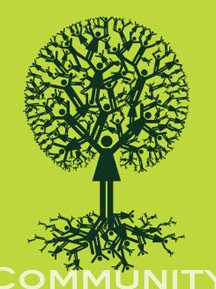
News organizations may be restricted inside Iran but various reports still manage to make headlines, ranging from militiamen "carrying out brutal nighttime raids, destroying property in private homes and beating civilians in an attempt to stop nightly protest chants" to several British Embassy employees being targeted and detained.
The turmoil began as a national disturbance shortly after the polls closed on June 12. It continues to escalate as protesters reject reports that Mahmoud Ahmadinejad, who assumed office in 2005, earned more than 60 percent of the votes cast. The election was rigged, they say. More than 2,000 Iranians have been arrested and hundreds more have disappeared since.
"We have enjoyed so much freedom for so long that we are perhaps in danger of forgetting how much blood it cost to establish the Bill of Rights." — Felix Frankfurter, Associate Justice of the United States Supreme Court, 1939-1962
Not everyone. People from around the world are uniting for free elections in Iran. Some are sharing their thoughts on blogs and social networks such as Facebook and Twitter. Many of them are asking their readers, followers, and friends to visit Amnesty International or other human rights groups to take action.
But even those who do not take direct action can have an impact as elected officials and government leaders around the world look toward social media to gauge public sentiment. Members of the media do too. Since June 12, social media has hastened the shift of some administrations from painfully dismissive to cautiously concerned.
Of course, not everyone agrees. Sure, Matt Sussman was only penning satire, but not all detractors do.
"I believe there are more instances of the abridgment of the freedom of the people by gradual and silent encroachments of those in power than by violent and sudden usurpations." — James Madison, Virginia Convention, 1788
Madison might have been talking about the United States in the late 1700s, but the sentiment can easily be transplanted to today. Sometimes, I think people forget what it was like five or ten years ago when the most action any member of the public took over political unrest was grumbling at a television set.
Does it matter? Of course it matters. It matters just as much as the groundwork laid by Gandhi through the Satyagraha in India. While the exact reasons for the British departure is more likely related to the creation of the Indian National Army and the revolt of the Royal Indian Navy, the foundation for such events and the global perception of British occupation was set much earlier.
Does it matter? The Guardian reports, maybe so. We tend to agree. Silent acceptance and excuse against any action are most often the preferred means of oppressive governance. It's so much easier to rule when the people do nothing, believing themselves unfit.
"Many politicians are in the habit of laying it down as a self-evident proposition that no people ought to be free till they are fit to use their freedom. The maxim is worthy of the fool in the old story who resolved not to go into the water til he had learned to swim." — Lord Thomas Macaulay, politician, essayist, poet and popular historian, 1800-1859





































